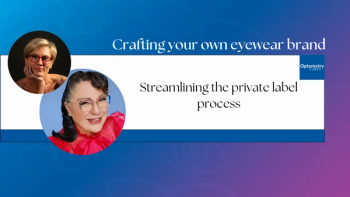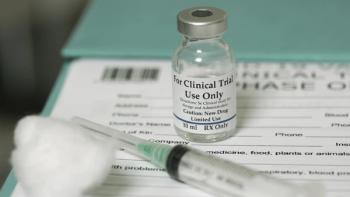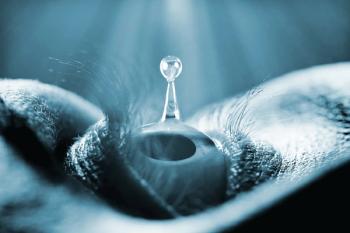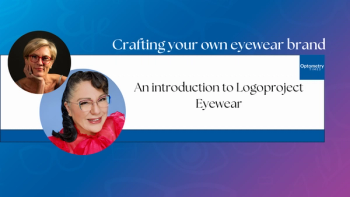
AOA 2025: Improving sleep hygiene for the sake of brain and ocular health
From blue light blockers to sleep apnea, Jacqueline Theis, OD, FAAO, FNAP; and Joseph Allen, OD, FAAO, Dipl ABO, outlined how sleep can influence brain and ocular health, and vice versa.
Understanding the ocular implications of sleep hygiene can make a difference for many patients, particularly those with traumatic brain injuries (TBIs), according to Jacqueline Theis, OD, FAAO, FNAP; and Joseph Allen, OD, FAAO, Dipl ABO. In their American Optometric Association’s Optometry’s Meeting 2025 presentation “Enhancing Vision and Brain Health: Understanding the Importance of Sleep” given in Minneapolis, Minnesota, the pair outlined how sleep habits can be influenced by brain and ocular health, and vice versa.1
In terms of the eyes playing a role in sleep quality, Allen stated that although the rapid eye movement (REM) stage of sleep is an important stage in the sleep cycle, it largely remains a scientific mystery. “I can’t say it’s proven, but actually an eye care provider came up with this theory, because the eyes with aqueous humor need to bathe the backside of the endothelium of the cornea, and if the eyes aren’t moving, they all become stagnant,” Allen said. “Then there are concerns about hypoxia in some of those tissues. So it might have been an evolutionary benefit for our eyes to shake at night, because it’s like shaking up a snow globe and it gets the aqueous humor to start flowing and bathe those internal structures.”
According to the CDC, the recommended hours of sleep per day are 16 to 18 hours for babies and infants, 9 to 12 hours for those aged 6 to 12 years, 8 to 10 hours for those aged 13 to 18 years, and 7 to 9 hours for those 18 years and older. However, Theis said that studies have shown that patients with brain injuries or neuroinflammation need 8 to 10 hours of sleep a night.1
“The problem is that when you had a brain injury, you injured your brain, which regulates when you fall asleep,” Theis said. “One of the most common things that people have when they had a brain injury is sleep dysfunction in our clinic.”
Otherwise, a patient who is getting an excessive amount of sleep (more than 10 hours) may have other underlying health conditions, such as cardiovascular disease.1
Light also plays a large role in sleep quality, with sleep being highly affected by the intrinsically photosensitive retinal ganglion cells’ (ipRGCs) role in the light-dark cycle, which aids in circadian synchronization. Because ipRGCs contain melanopsin, which is directly excited by blue light and rod/cone inputs, a lack of or decrease in blue light causes the cells to signal to the brain to secrete melatonin, thus preparing the body for sleep. Theis said that in the case of blue blockers, preventing the eyes from too much light exposure has the potential to affect sleep hygiene.1
“Blue light suppresses melatonin secretion so that you’re awake, so putting someone in a blue blocker all day long can actually cause chronic fatigue if you put them in too intense of a blue blocker because blue light keeps us awake, it gives us cognitive function,” Theis said.
However, Theis and Allen said that there remain significant discrepancies regarding whether blue blockers are effective at blocking blue light. Allen said the transmittance percent of a given blocker can be indicative of how effective said blocker may be.1 “FL 41 is a top-notch filter. Not every FL 41 is the same,” Allen said. I have bought every FL 41 on the market. I have every single one in my practice, and I’ve done spectrophotometry through all of them, and they all have different profiles. When I had my migraine patients come into my office and they try on different lenses, they’re like, ‘I like this one, but not that one,’ and every single one of them is different. So just because they’ve tried one and they say it doesn’t work for them, try another.”
Theis also noted that the amount of blue light that is processed by the eye depends on how close or far away a device is held to the face. She noted that prominent blue light researcher Phillip Yuhas, PhD, often compares a blue blocker as having the same effect as holding a device an additional foot or so away from your eyes.1 One study also found that switching devices into night-mode functions reduced melatonin suppression value by up to 93%, whereas blue light-reducing spectacles reduced suppression by 33%, with coated lenses more efficient than tinted lenses.2 Theis recommends to her patients to turn all televisions, smartphones, and laptops to blue mode or night mode 3 hours before bedtime to help aid in sleep hygiene.1
Theis and Allen also discussed that insufficient/short sleep duration is associated with an increased risk of early age-related macular degeneration, associations between sleep apnea and glaucoma, CPAP machines causing dry eye, and when to refer patients to have sleep studies performed (often when presenting symptoms of floppy lid syndrome).1
“Our big thing is to have a conversation with the patient,” Theis said. “I can’t get your dry eye better if you’re not sleeping."
References:
Allen J, Theis J. Enhancing Vision and Brain Health: Understanding the Importance of Sleep. Presented at: Optometry’s Meeting 2025; June 25-28; Minneapolis, MN.
Teran E, Yee-Rendon CM, Ortega-Salazard J, De Gracia P, Garcia-Romo E, Woods RD. Evaluation of 2 strategies for alleviating the impact on the circadian cycle of smartphone screens. Optom and Vis Sci: Official pub of the Am Academy of Optom. 2020;97(3):207-217. https://doi.org/10.1097/OPX0000000000001485
Newsletter
Want more insights like this? Subscribe to Optometry Times and get clinical pearls and practice tips delivered straight to your inbox.














































.png)


